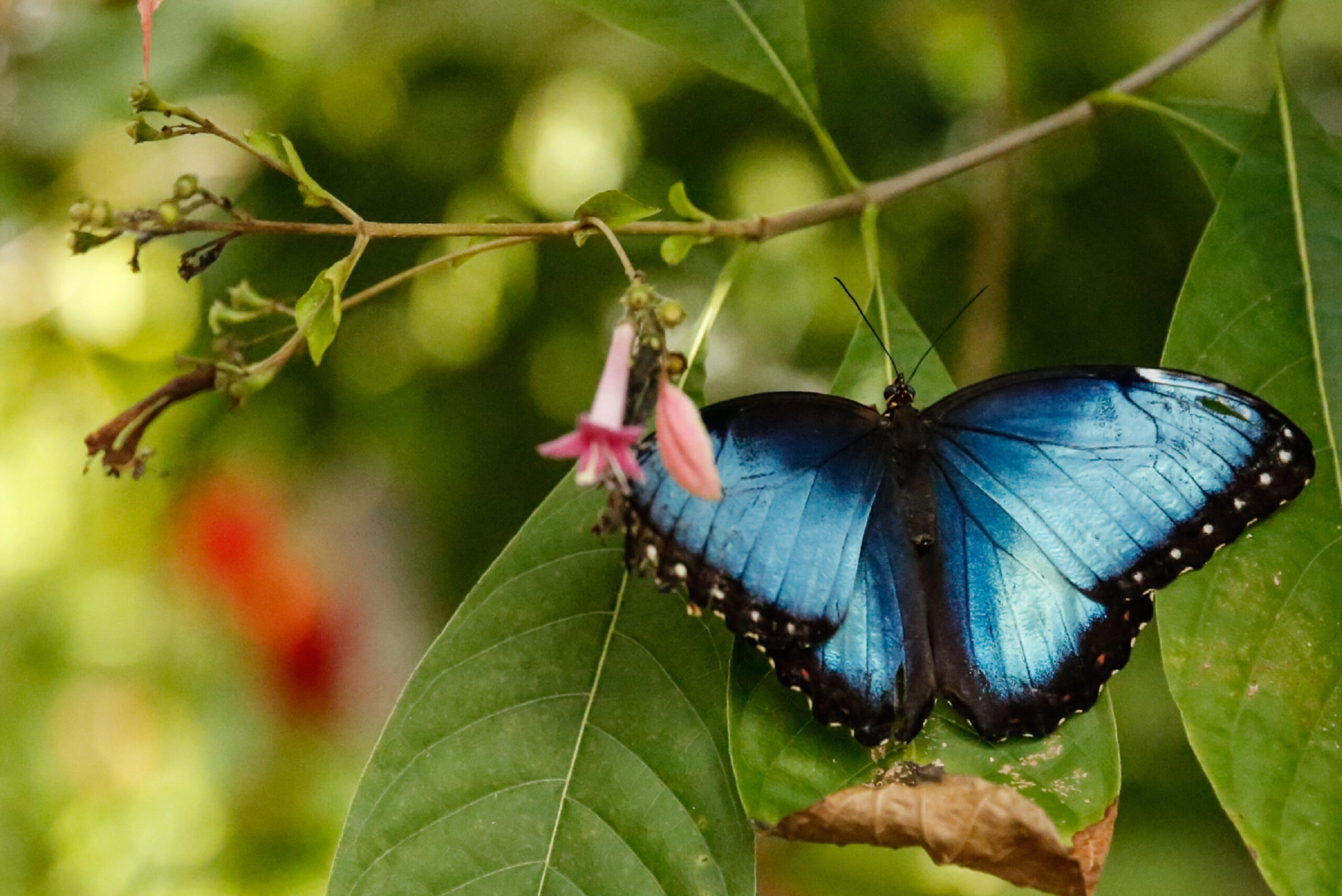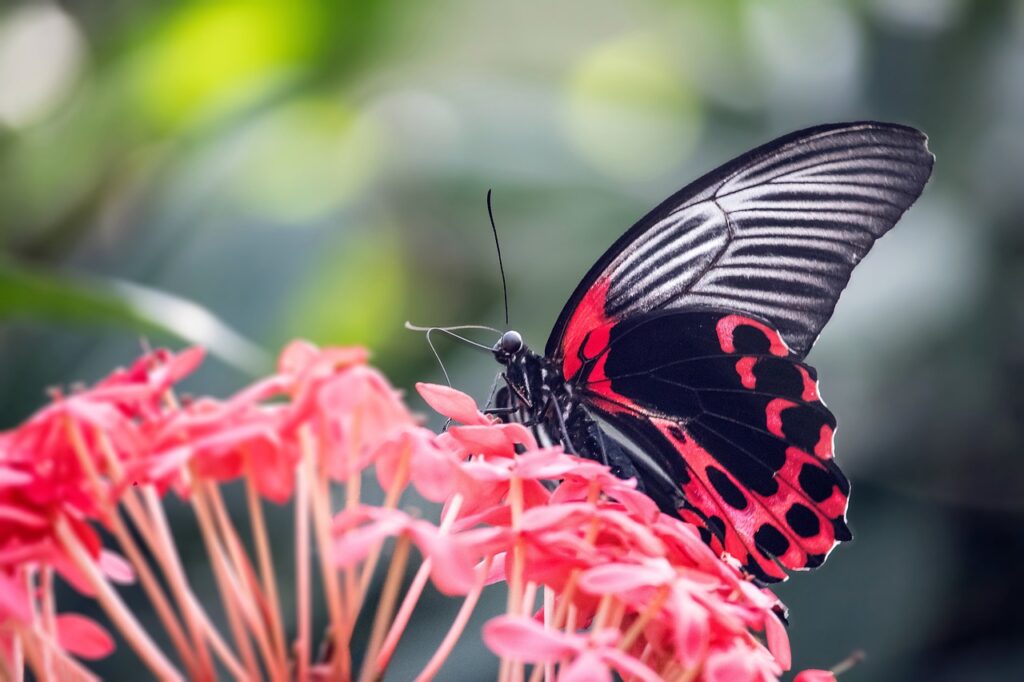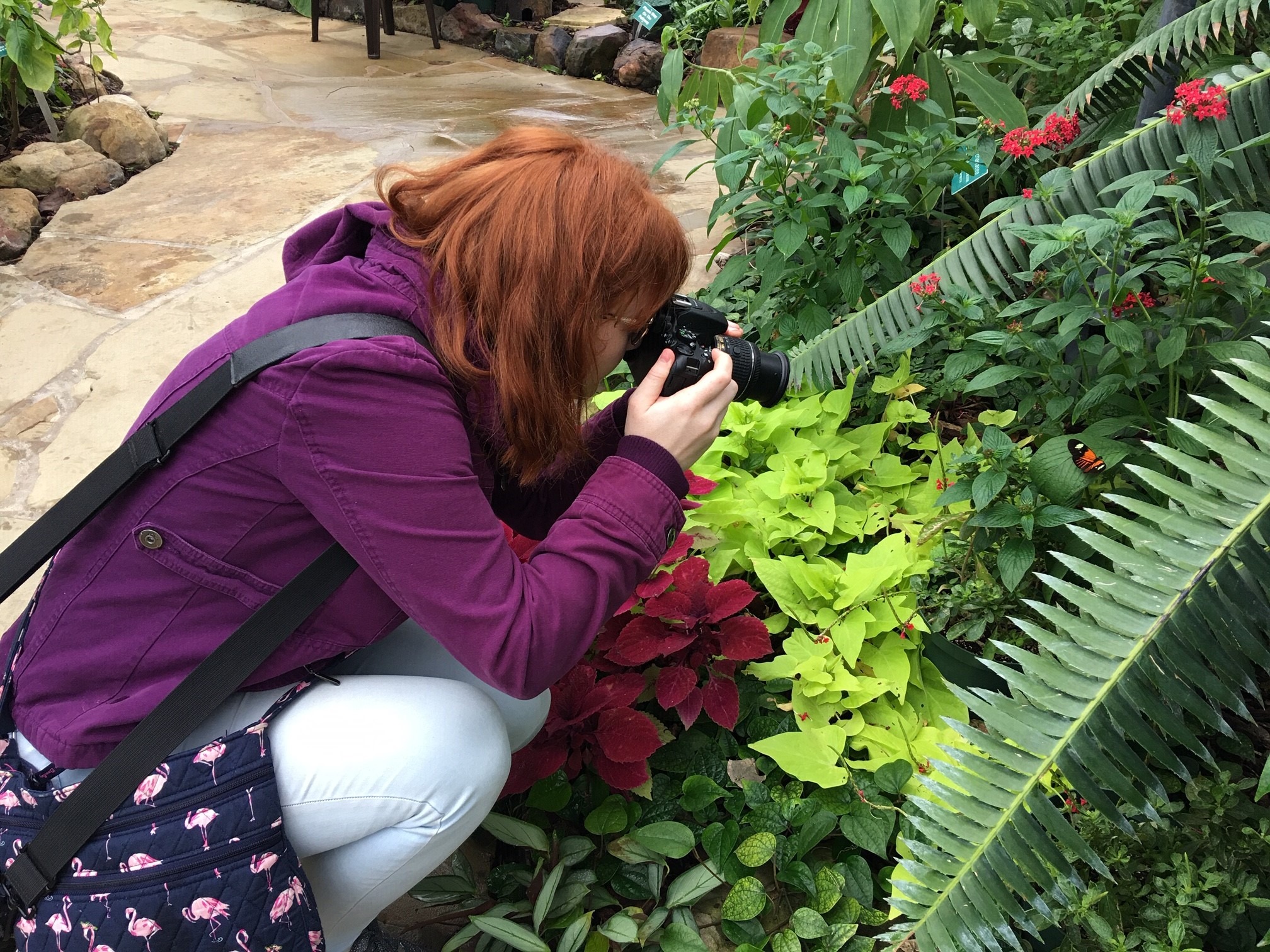
If the first instinct of visitors to Butterflies in the Garden is to gasp in wonder, the second is to pull out a camera. But the results can sometimes be disappointing. What seemed like a perfect shot might come out muddled or confused–or the butterfly might take flight before you can hit the button.
To capture the dazzling butterfly photographs you’ve imagined, sign up for the Garden’s upcoming workshop with local photographer and popular instructor Edgar Miller. “Students come away with amazing photos of butterflies in our class,” says Miller.
| Register Now for “Photographing Butterflies in the Garden“ April 2, 8:30 – 10 |
One of the biggest challenges of photographing butterflies is that they are skittish creatures. “They can spook easily,” says Miller. “Moving closer for a shot can send them flying.”
Photographers need to be able to move around, says Miller. That means a tripod is not the best accessory for the job. At most, Edgar suggests a monopod, a single support that can help hold up a heavy camera lens.
The right lens makes a huge difference in getting a great butterfly photo. Miller recommends a short telephoto lens for photographing butterflies. “You don’t need a giant telephoto lens–a small zoom is plenty,” he says. “It allows you to get a close-up image from enough of a distance that you don’t scare away the butterfly with your movements.”
A telephoto lens is better for capturing butterflies than a macro lens, Miller says, because a macro lens has a very shallow depth of field–that is, only a narrow plane of the image is in focus, while the rest of the image is blurry. Since it is difficult to get close to the butterflies, photographers need a deeper depth of field to work within to keep the image sharp.

Once you’ve found your shot, expect that it won’t last long. “Once you approach, keep shooting until the butterfly flies away. Spray and pray is the term for that,” says Miller.
The class is intended for photographers who own cameras with interchangeable lenses. However, guests with smartphone cameras can also take beautiful butterfly photos by tweaking the settings on their cameras.
“Most iPhones and other phone cameras have a telephoto option, so try playing with that,” says Miller. “It will allow you to take a close-up image of the butterfly while isolating your subject against the background.”
Miller’s class starts at 8:30 am, before Butterflies in the Garden is open to guests, which allows students lots of uninterrupted time in the Conservatory. The butterflies also tend not to be as active in the morning than in the afternoon when the space warms up.
“That’s another tip if you can’t take the class–get there as early as you can,” says Miller. “The butterflies are still waking up and not moving as fast as they will be later in the day. You’re sure to get some gorgeous photos.”






